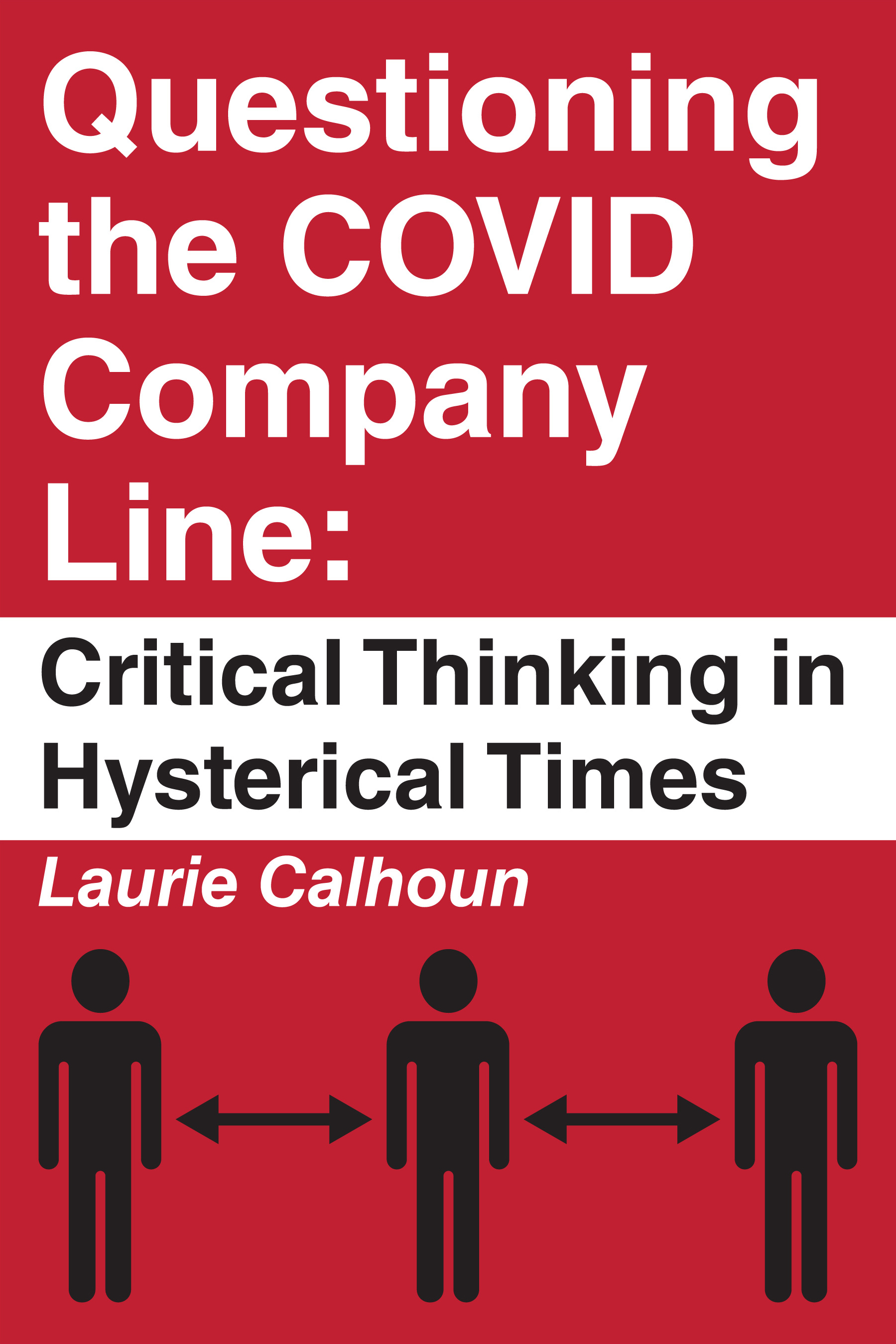Imagine someone who did not know the difference between right and wrong and felt that he could, and should, take anything he wanted from anyone he wanted because, as far as he could see, there was no reason not to. If he wanted to buy something but was low on funds, he would not hesitate to kill someone in order to access his wallet. If he became hungry, he would be willing to slay a randomly selected human being for the contents of his lunch box. People like this are sometimes referred to as “criminally insane,” because they genuinely do not appear to understand why they should not do whatever they happen to feel like doing, even when it harms someone else, and even when it destroys that person’s life. Such creatures do exist, and when they are finally apprehended, they are locked away in psychiatric hospitals or maximum security prisons to prevent them from harming anyone else.
Now consider the comportment of modern political leaders, who kill the inhabitants of other lands, and sometimes also their own, because they believe that their political goals are more important than the victims’ lives. Leaders who perpetrate mass homicide in the name of a country, or in some cases humanity, claim that they are acting nobly, with honor, even as piles of dead children amass. When an enemy leader conducts himself in a manner deemed unacceptable, then the “proper” response is thought by foreign policy elites to be to rain bombs upon the offending leader’s land, no matter how densely populated it happens to be. All of this would be laughable, if it were not in fact the widely accepted, albeit pathological, first premise of contemporary foreign policy.
Once upon a time, leaders fought alongside their troops. Bellicose presidents and prime ministers continue to this day to pose as courageous, even though they themselves are nearly never at any risk of personal harm when they order their troops to deploy or drop bombs abroad. When Saddam Hussein’s army invaded Kuwait in 1991, President George H.W. Bush stated in a letter to the leader: “There can be no reward for aggression. Nor will there be any negotiation. Principle cannot be compromised.” Bush Sr was heralded at the time as a strong leader by pundits, whose words were then parroted by the populace. Later, Bush bragged about having “kicked the Vietnam syndrome,” that is, what had become the reluctance of Americans to become embroiled in foreign wars, and the rest is history. The entire twenty-first century has been one long, continuous bombing campaign abroad.
In reality, Bush Sr’s refusal to engage in dialogue was not the mark of a great man but of someone entirely unconcerned with the consequences of unleashing massive military might against untold numbers of people in response to what was decried as a criminal act by the dictator of their land. The innocent persons who died as a direct result of Bush Sr’s decision to target civilian structures, including water treatment facilities, were blithely labelled “collateral damage” and swiftly swept from the collective memory of the citizenry which funded their ruin. President Bill Clinton effectively extended his predecessor’s assault on the people of Iraq, not only with further bombing, but also by implementing severe sanctions which made it impossible either to purify the contaminated water or to access medicines needed to treat the diseases caused by it.
A decade after Operation Desert Storm, on September 11, 2001, a group of angry jihadists killed about 3,000 persons on U.S. soil. People all over the world, including the United States, were shocked and appalled. Most everyone in the West had been successfully indoctrinated to believe that the 1991 Gulf War was just, and they never heard about the thousands of innocent Iraqis who died as a result of Bush Sr’s insistence on dropping massively destructive bombs in response to a minor border dispute which could, and should, have been resolved by sending knowledgeable persons to investigate whether or not Saddam Hussein’s claim that Kuwait was siphoning off Iraqi oil was true.
President George W. Bush, having already refused to negotiate with the Taliban in Afghanistan in 2001, continued his father’s assault on the Iraqi people when he ordered the reinvasion of their country in 2003. Before invading, in an ersatz show of diplomacy, Bush Jr announced that Saddam Hussein could forestall the invasion if, and only if, he proved that he had no weapons of mass destruction (WMD). A negative existential proof being impossible, Bush moved ahead with his war, ignoring reports by (non-U.S.) experts, including U.N. Chief Weapons Inspector Hans Blix, that there was no evidence for the existence of any biological, chemical or nuclear arsenals, or programs for their production, in Iraq.
The crimes of September 11, 2001, thus served as a rallying call to let slip the dogs of war once again, and the War on Terror wrecked or degraded the lives of millions of persons in Afghanistan and Iraq who had absolutely nothing to do with what happened on that day, the perpetrators themselves having hailed mostly from Saudi Arabia. The United States has been engaged in nonstop bombing ever since, continually combating an ever-expanding array of enemies, such as ISIS, created by its very own interventions.
Every war is supported by outspoken figures such as Senator Lindsey Graham and former Secretary of State Hillary Clinton, who persist in posturing as though the United States of America is the benevolent beacon on the hill, shining the light of freedom and democracy all over the globe. Meanwhile, the U.S. government undertakes assiduously to destroy persons, such as Wikileaks founder Julian Assange, who attempt to illuminate the criminal comportment of the U.S. regime and thus pose a threat to the maintenance of the delusional image of the United States as “the indispensable nation.” Whistleblowers such as Daniel Hale and Chelsea (formerly Bradley) Manning are thrown into federal prison, while the crimes they expose continue on unabated, under cover of “state secrets privilege,” essentially the modern-day equivalent of the Ring of Gyges (Plato’s Republic).
From the perspective of rationality, what is most disturbing about recent history is the degree to which there is nearly never any attempt to assess the value or outcome of the many lethal rampages inflicted on the world by the U.S. military state in the name of democracy and peace. A recently released a report by the Africa Center for Strategic Studies, one of the Pentagon’s own research institutions, has concluded that deaths from terrorism in Africa increased 100,000 percent during the U.S. War on Terror. But even such sobering news serves as no cause for pause to the cheerleaders for mass homicide. They have altogether lost touch with reality by now and have managed at the same time to hypnotize most of the populace to the point where they regularly recycle pro-war incantations in what has become a form of catechism to this religion of bellicosity, even as the nation marches steadily toward insolvency.
The chasm between reality and image has grown so vast by now that it seems fair to say that our culture is in decline primarily as a result of the inability of persons in positions of power to recognize that their campaigns of mass homicide have not only ruined the lives of millions of persons abroad, and created an unsustainable amount of national debt, but are also tearing away at the very fiber of the nation itself. The government officials ostensibly in a position to alter policy, such as President Biden and Secretary of State Antony Blinken, appear to be trapped in a world of their own propagandistic device. While arguing so enthusiastically for bombing and the provision of weapons on the slightest pretext, anywhere and everywhere, they find themselves enmeshed in a web of deception any extrication from which would require them to own up to their decisive role in ending the lives of far more human beings than any serial killer or hitman ever destroyed.
Nearly everyone recoils at the thought of the serial killer who strikes randomly to end the lives of his innocent victims, or the hitman who eliminates people in exchange for a small bundle of cash. Yet war profiteers such as Secretary of State Lloyd Austin, former U.N. Ambassador Nikki Haley, former Vice President Dick Cheney, and many others, are taken seriously when they insist that every conflict everywhere must be addressed through the use of deadly force. They simply do not care that the people who actually suffer as a result of bombing are nearly never the allegedly evil leaders whose actions are said to demand a response.
Following the unsavory examples of George H.W. Bush and George W. Bush, the Biden administration refuses to engage in dialogue with leaders such as Russian President Vladimir Putin, even while knowing, on some level, that the conflict in Ukraine can only end either at the negotiation table or in a disastrous nuclear war. Putin himself stated in the recent interview by Tucker Carlson (the closest thing we have to a diplomat at this tragic moment in U.S. history) that Russia and Ukraine were on the brink of resolving their dispute when Prime Minister Boris Johnson met with Ukrainian President Volodymyr Zelensky to block any possible détente because the U.S. government in fact wanted Ukraine to go to war.
In drumming up support for a massive infusion of weapons into both Ukraine and Israel, President Biden proclaims that every nation has a right to self-defense. Meanwhile, record numbers of persons have been entering the United States illegally, with the Biden administration suing the State of Texas for attempting to enforce the southern border. It might be tempting to write off Biden’s incoherent policy positions as the kaleidoscopic ephemera of a rapidly degenerating brain. But how are we to understand the acquiescence of the majority of the U.S. Senate to a bill which funds not only the meatgrinder war in Ukraine but also the ongoing slaughter of the Palestinian people in Gaza, including many thousands of obviously innocent children, in response to the crimes of radical dissident members of Hamas?
The answer is that the moral consciousness of the entire body politic differs from Biden’s own sorry state in degree, not in kind. U.S. political elites have achieved the rare distinction of being able to promote, in all sincerity, policies the consequences of which are indistinguishable from those of the psychopathic serial killers found in high security federal prisons today. The mindset required to fund the continuous massacre of large numbers of entirely innocent human beings on the pretext of facilely affixed and entirely mendacious labels such as “humanitarian intervention” and “peace and democracy,” erasing the victims from existence and then moving on to the next group to be extinguished, is psychologically equivalent to the poisonous cogitations of a psychopath who believes that whatever he desires is the only relevant consideration in deciding whom to kill in order to achieve his aims.
It is stunning that so many U.S. citizens have acquiesced to a quasi-psychotic worldview which permits them to pay for and enthusiastically support the annihilation of entirely innocent persons in response to what have been decreed the unacceptable behaviors of foreign leaders and small factions. Rather than looking at a pile of dead corpses and recoiling in horror, vowing to stop the madness, many citizens interpret this mayhem as the well-intentioned outcome of their leaders’ just wars. That such carnage is not only self-defeating, guaranteed to produce yet more retaliatory violence in what has been diagnosed even by military intelligence itself as blowback, is ignored each time the possibility for a new intervention is proposed. There is no more apt word to describe this categorical refusal to acknowledge the basic contours of reality than psychosis.








